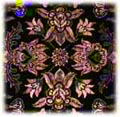|
Carpets and Durries
Carpet Weaving is not indigenous to India
but brought in by the Mughals. By the end of the late 16th century,
Indian carpet weavers were producing superior examples comparable
with the finest products of Persia. The rulers of Amber-Jaipur took
a great interest in carpets and built up a large collection of 16th
and 17th-century Persian and Mughal Carpets. The Carpet industry
in Jaipur started only in the mid-19th century when carpet-making
was introduced as a jail craft. Ajmer and Bikaner were also selected
as carpet weaving centers.
|
Mughal
Carpets - This shaped Mughal
carpet is from the Shah Jahani looms of Lahore. Mirza Raja
Jai Singh bought a large number of such individually shaped
carpets for spreading in his garden at Amber.The design used
in palaces of the Red fort and the Taj Mahal. Some Mughal
Carpets are on display at the central Museum and the Maharaja
Sawai Man Singh IInd Museum, Jaipur.
|
|
|
|
Rajasthani
carpets - Modern Rajasthani
carpets follow north's Persian design. Often dictated by the
buyer's tastes, such designs frequently incorporate hunting
scenes or romantic scenes or romantic themes from Persian
poetry.
|
|
Durries - A durrie is a cool
light Rug. Rajasthani durries are smooth and closely woven.
Pastel shades and a sparse use of geometrical and vegetal
motifs are popular.
|
|
|
|
Durrie Making - Durries are
woven all over the country where skilled labour is available
cheaply. Durries-Making which dates back to very ancient days
in India had been popular in eastern and northern Rajasthan,
meeting a steady demand from the court and the general public.
|
Weaving
Carpet -Weaving
entails the combined efforts of the Designer, Dyer, Weaver and the
Knotter whose skillful and deft fingers apply the delicate knots
of different shades to bring out the design. The knots are then
trimmed with a pair of carpet scissors,and the carpet is ready after
a wash.
|



